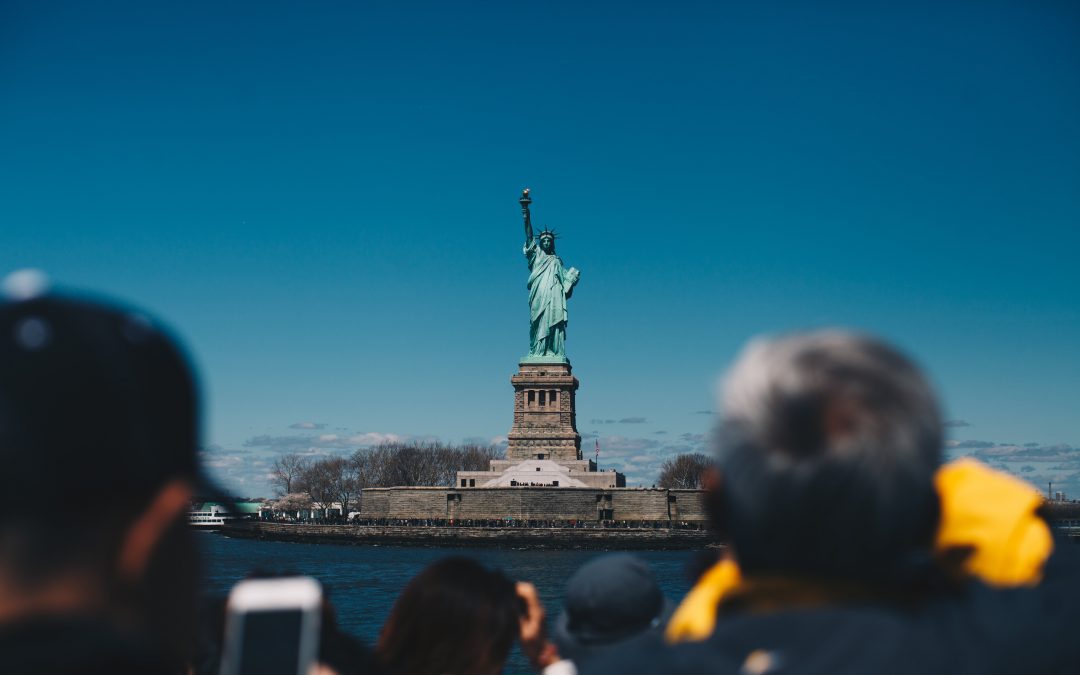After a contentious presidential election in which immigration policy was, and remains, a crucial issue, Americans might consider their roots as a country of immigrants. As illustrated by this colorful animation, the United States has welcomed and (gradually) integrated a rainbow of people. Ellis Island began processing European immigrants as early as 1855, though the post did not fall under federal jurisdiction until 1892. Immigration slowed in the early 20th century due to the upheaval of the first world war, as well as new laws regulating and restricting immigration—an early taste of globalization. Until 1954, Ellis Island served as the portal for so many to this new world of opportunity. And their first stop was New York City.
New York is recognized as one of the most dense and expensive cities in the world, so how did all these newcomers get their start? How did they find the room and resources to settle in a teeming metropolis? As admirably documented and even reconstructed by New York’s own Tenement Museum, early immigrants lived in incredibly crowded conditions and worked hard to make ends meet. Modern day New Yorkers might scoff: How much more crowded can it get? The answer is very. Back then, tenants far exceeded the maximum occupancy requirements enforced today, and the overcrowding resulted in slum-like conditions.
Immigrants tended to settle into tightly-packed ethnic enclaves. These silos easily became self-sufficient, if situationally segregated, as described in the recently released City of Dreams by Tyler Anbinder. The New York Times book review summarizes nicely: “The social benefits of the immigrant enclave were immense, especially at a time when governments didn’t provide much in the way of garbage collection — roving pigs were about the best slum dwellers could expect until later in the 19th century — much less social services. […] Immigrant civic groups sprang up to meet every sort of need from the medical to the recreational to the spiritual.”
So New York City’s neighborhoods and culture were greatly shaped by these immigrant populations, giving us the Little Italy and Chinatown we know today. And the city’s current immigration stance recognizes its roots. Since 2014 the city has more than doubled its budget for immigrant services, like legal representation, and aims to integrate documented and undocumented alike with programs like IDNYC.
The experience of today’s immigrants is very different from that of 19th century immigrants: globalization has smoothed over many transitional difficulties and barriers. For those who settle here—perhaps after a roundabout journey and certainly with some degree of struggle and sacrifice—buying property can be symbolically powerful: a sign that they have arrived, they belong, and they own a piece of the American Dream. Although travel and language are not the obstacles they once were, institutions can still stand in the way of this transaction. Credit histories, international accounts, the intricacies of loans and mortgages, and the nuances of a real estate translated across a language barrier considerably complicate the process. And any New Yorker will readily tell you that the city’s uber-attractive real estate market is unlike anywhere else, with complex rules, interviews, appointments, fees, and paperwork to boot. The applied simmer of competition—with supply greatly outweighing demand—turns this all into a fine stew. Not to mention the ever-rising value of New York real estate.
An interesting and relatively recent federal program (1990) rewards foreign investment in American real estate with green cards. This program has a certain irony, since owning real estate would have been a challenge for immigrants in the past, but now investing from abroad affords investors the opportunity to live in the states. The EB-5 federal visa program gives legal residency to investors (and their dependents) who infuse half a million to a million upfront in real estate development deals.
This program has become increasingly popular since the market crashed and housing bubble burst. Loans are now harder to come by, so developers looked outward. Many large real estate projects in New York—Hudson Yards, Pacific Park, International Gem Tower, and the New York wheel—use a model reliant on foreign investment, since investors will accept lower interest rates with the added visa incentive. So to invite people abroad to invest in US real estate before they even arrive, and often independent of their eventual domestic residence, is the new and preferred method of immigration, particularly for the Chinese. This article by The Real Deal magazine is an in-depth look at the impact of this new wave of Chinese immigrants on the existing tenants of Chinatown and other areas of New York City real estate investment.
For an idea of what New York City real estate looked like to immigrants in the late 1800s, check out King’s handbook of New York City by Moses King, How the Other Half Lives by Jacob Riis, and take a tour of the Tenement Museum. Though it won’t stop New Yorkers from complaining about square footage, it will certainly put things in perspective, including the national debate on immigration.

